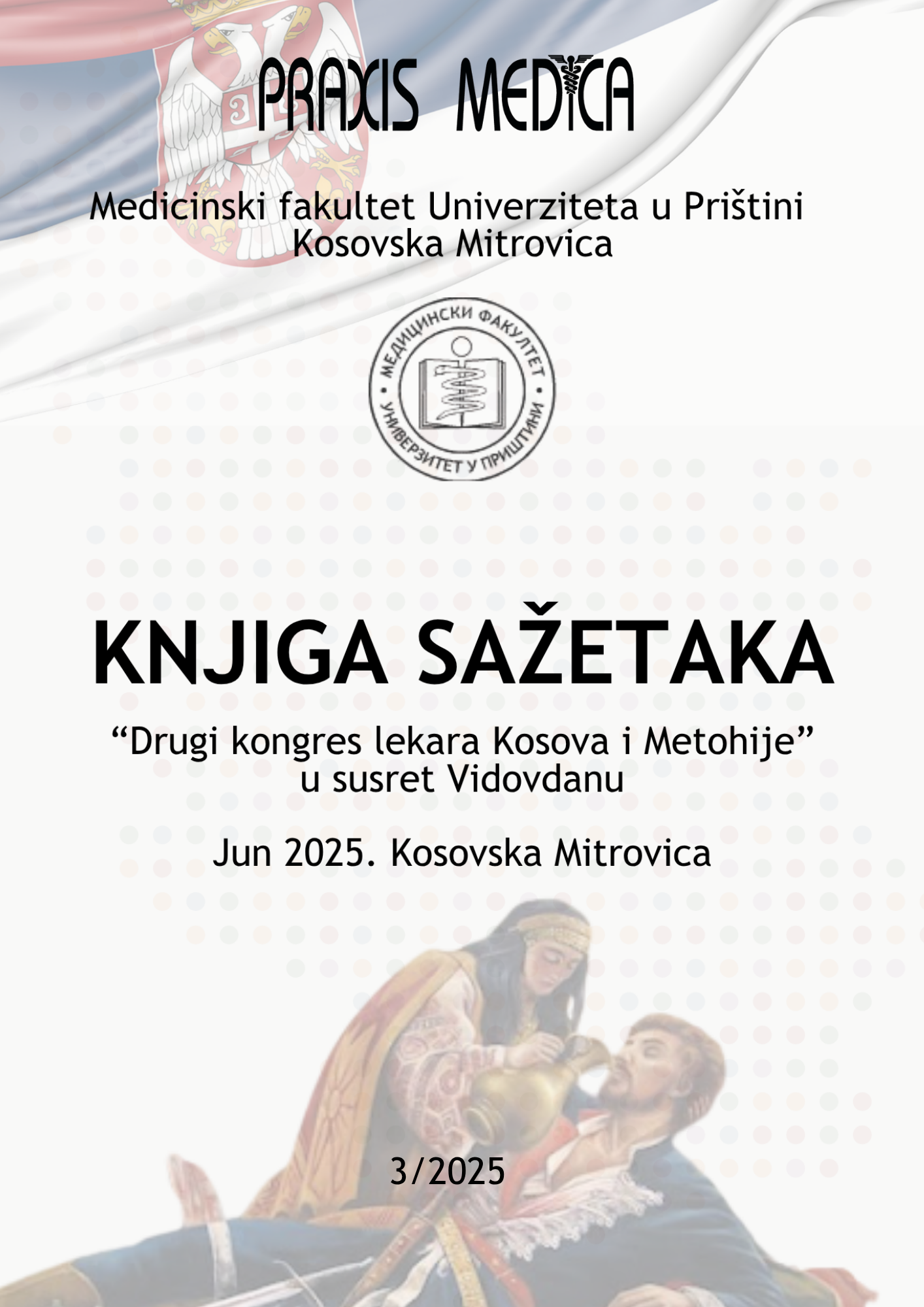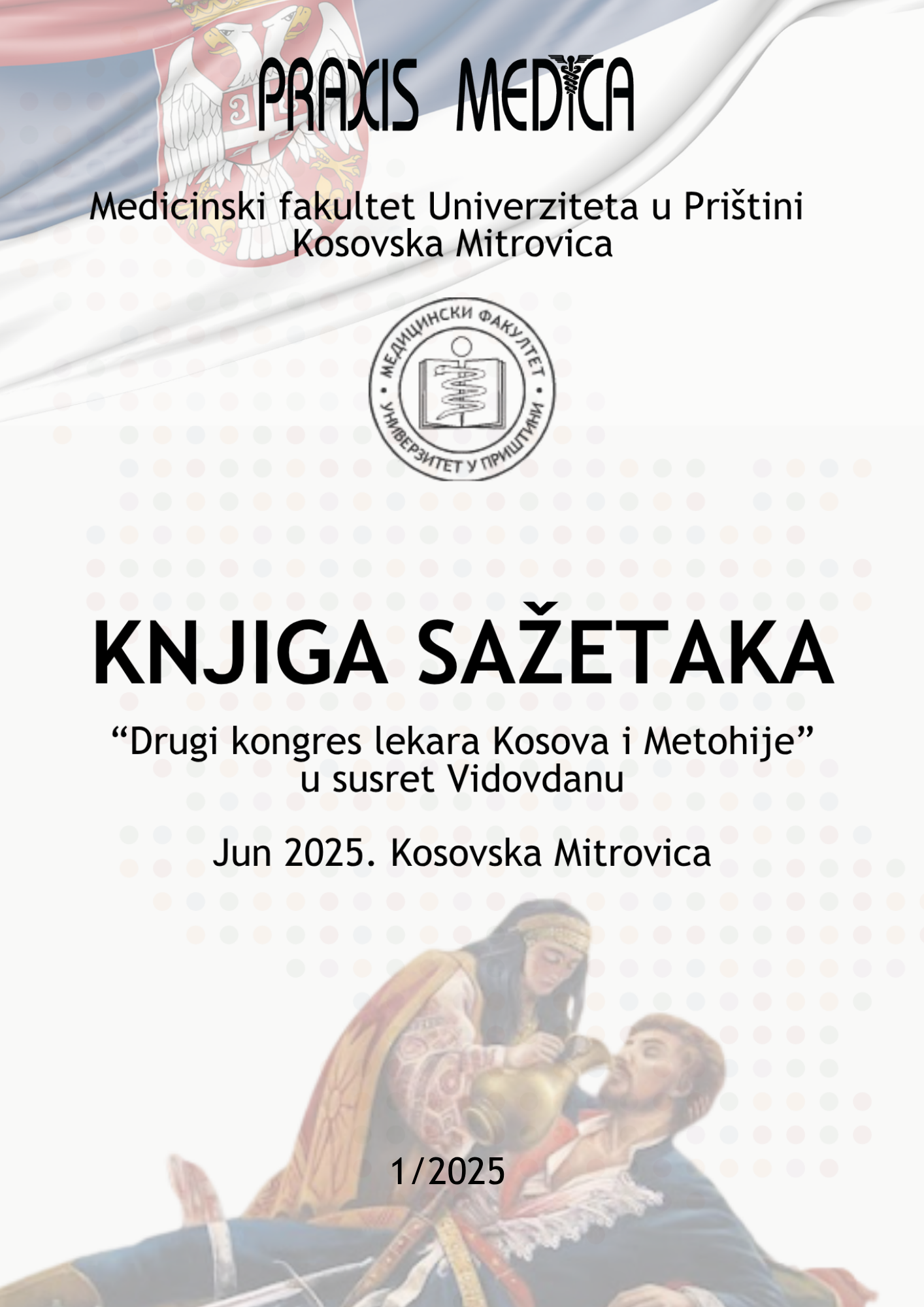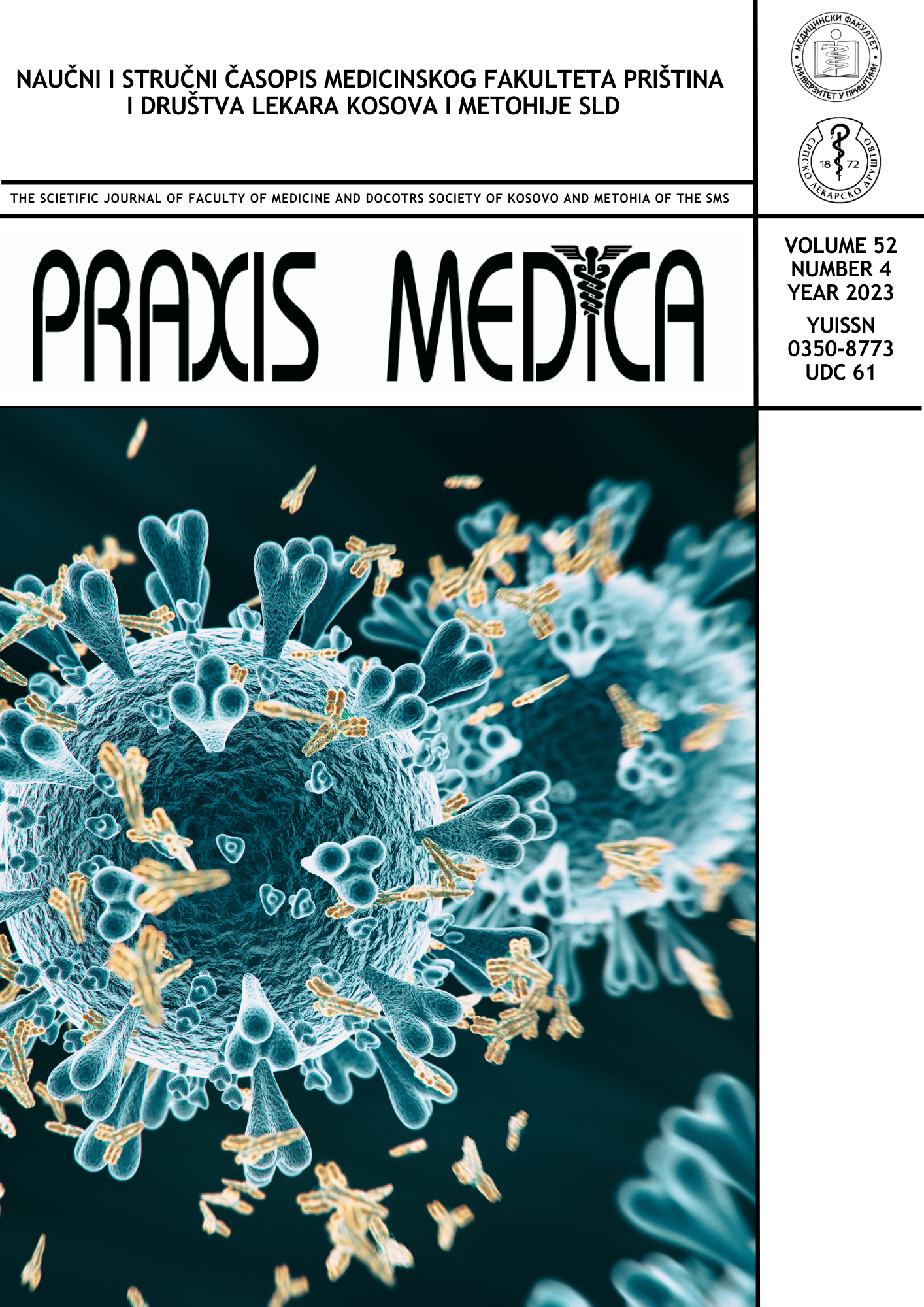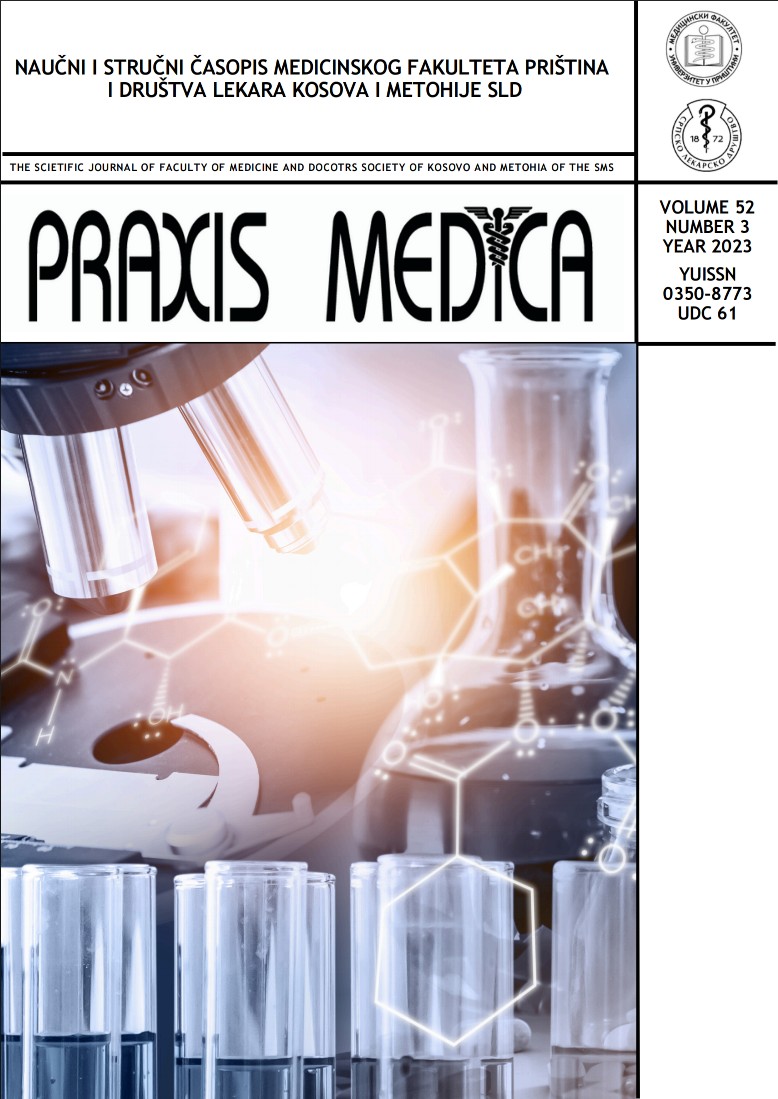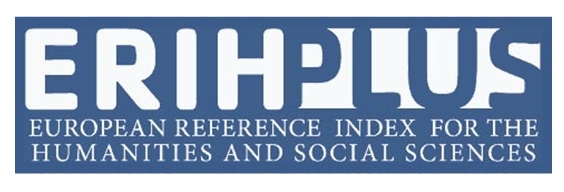Current issue
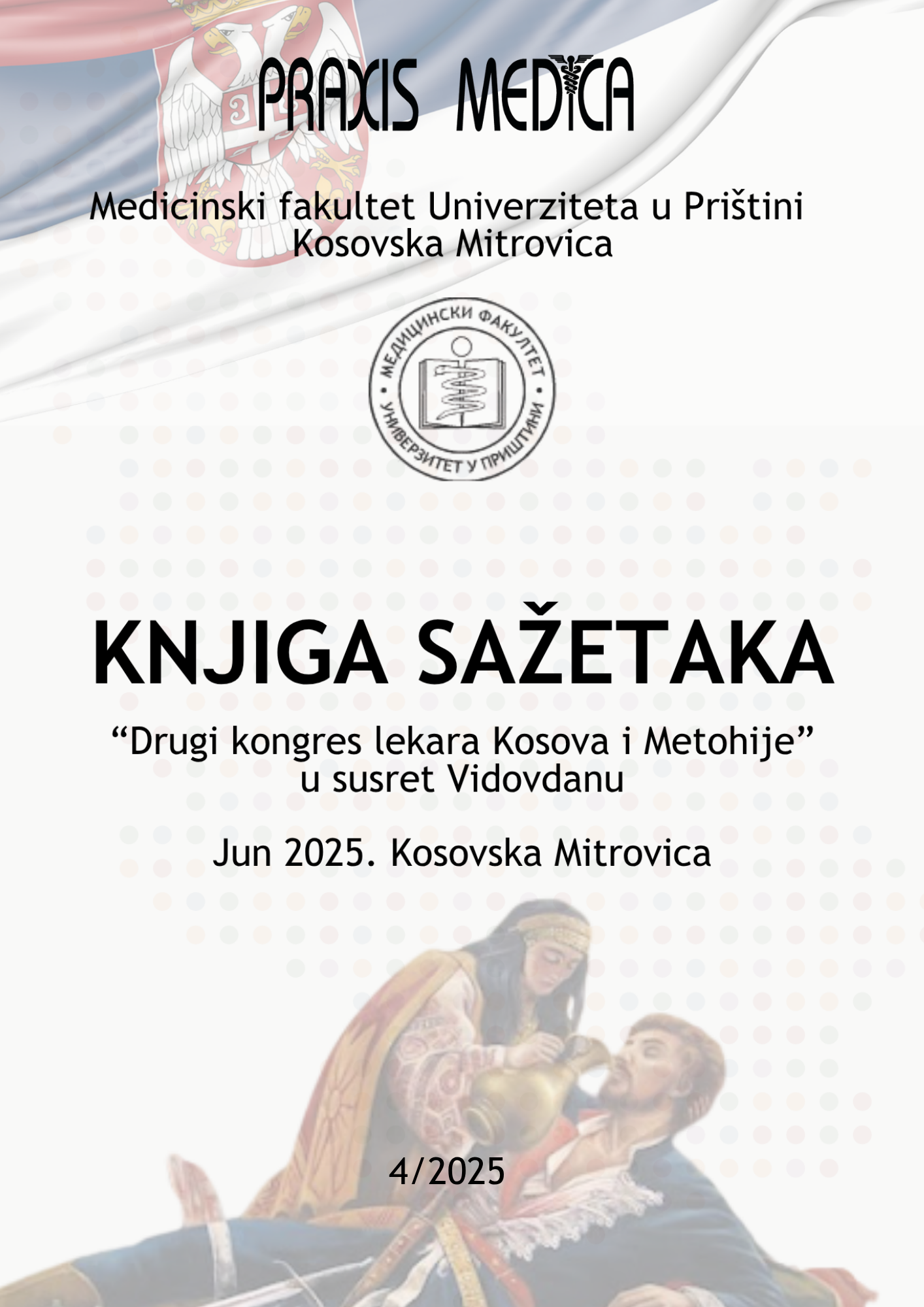
Volume 53, Issue 4, 2025
Online ISSN: 2560-3310
ISSN: 0350-8773
Volume 53 , Issue 4, (2025)
Published: 30.06.2025.
Open Access
All issues
Contents
01.12.2021.
Professional paper
Factors associated with involuntary hospitalization
In clinical practice, involuntary hospitalization in psychiatry is a procedure that patients with severe mental disorders are subject to due to the inability to make rational treatment decisions.. The prevalence of involuntary hospitalizations varies widely within and between countries. Involuntary admission to a hospital for psychiatric treatment can be life-saving and may be considered beneficial to some people in the long run. However, the experience of involuntary treatment can be traumatic, intimidating, stigmatizing, and lead to long-term avoidance of mental health services and an increased risk of rehospitalization. In this paper, we have considered the risk factors for involuntary hospitalizations and their frequency in the region and Europe.
Emilija Novaković, Ivana Stašević-Karličić, Mirjana Stojanović-Tasić, Tatjana Novaković, Jovana Milošević, Vladan Đorđević
01.12.2021.
Professional paper
Differential diagnosis distinction of nummular headache and Lichen planopilaris
Introduction: Nummular headache is a type of primary headache of chronic character, with a large number of described varieties in the clinical picture, and therefore the differential diagnostic consideration must include a large number of disorders related to changes in epicranial structures. Certain dermatological disorders can also include pain in a limited area of the scalp with itching, burning or burning sensation, such as Lichen Planopilaris. Case report: This is a report of a patient who was initially diagnosed with Lichen planopilaris, but after determining the parameters of the distinction and the necessary additional diagnostic procedures, a diagnosis of Nummular headache was made. Conclusion: In this presentation, we have presented another important differential diagnostic item and we believe that the work is a small contribution to everyday practice, but also to further research.
Snežana Filipović-Danić, Vekoslav Mitrović, Nenad Milošević, Aleksandar Stevanović
01.12.2021.
Professional paper
Lichen planus disseminatus partim vesiculosus after COVID-19 vaccine
Introduction: Lichen planus is an autoimmune inflammatory disease that can be associated with infections, drugs and vaccines. As concerning the potential triggering effect of vaccine, there is evidence a few cases of new-onset lichen planus that appeared after COVID vaccine, particularly the Pfizer/BioNTech vaccine. Case report: This report is a case of a newonset lichen planus triggered by the Pfizer/BioNTech vaccine administration in a healthy young female. Dermatological examination revealed polygonal, itchy, erythematous papules on trunk, upper and lower limbs, that coalesced into brownish plaques in the ankles, flexural wrist and knee. No mucosal involvement was noted. In view of the clinical picture, the timing of the skin eruption with respect to the vaccine and the histopathologic findings, a vaccine-induced lichen planus triggered by the COVID-19 vaccine has been diagnosed. Conclusion: Lichen planus or lichenoid-like eruption as a cutaneous manifestation following COVID-19 vaccines are rare, and the pathogenesis for its development is still unclear. Clinical trials showed that the leading vaccines upregulate Tcell response (Th1) and incrementing inflammatory cytokines involved in the pathogenesis of autoimmune diseases, such as lichen planus. Although we still do not completely understand its pathogenesis, dermatologists should be aware of the possibility and keep an eye out for worsening or debut of this disease after the COVID-19 vaccine. Vaccinated patients should be monitored for skin manifestations, and dermatological evaluation should be offered, when needed.
Dragica Milosavljević, Milijana Relić, Mirjana Stojanović-Tasić
01.12.2020.
Professional paper
Examination of early adaptation of newborns small for gestational age
Introduction: Children with low body weight for gestational age are five times more likely to die in the neonatal period and 4.7 times more likely to die in the first years of life compared to children born at term. The aim To analyze early adaptation to extrauterine life of low body weight for gestational age. Material and methods: Retrospective study with the observation period January-September 2018. The data were obtained by reviewing the medical histories of newborns. As parameters of early adaptation, we observed the Apgar score in the 1st and 5th minute as well as the presence of polycythemia at birth. Results: Out of a total of 405 newborns, 52 had low body weight for gestational age. Apgar score in the 1st and 5th minute was statistically significantly lower in children small for gestational age compared to children with normal body weight for gestational age (p <0.05). Polycythemia is a mechanism of adaptation statistically significantly more often present in children of small body weight for gestational age (p <0.05). Conclusion: Children of low body weight for gestational age have a lower Apgar score in the first and fifth minutes as well as more frequent polycythemia compared to children with normal body weight and we can take them as good indicators of adaptation to early extrauterine life.
Zlatko Noveski, Dejan Mihajlović, Tatjana Nikolić, Zoran Petrović
01.12.2020.
Professional paper
Respiratory epithelium: Place of entry and / or defense against SARS-CoV-2 virus
Coronavirus Disease (COVID-19) is caused by the RNA virus SARS-CoV-2. The primary receptor for the virus is most likely Angiotensin-converting enzyme 2 (ACE2), and the virus enters the body by infecting epithelial cells of the respiratory tract. Through the activation of Toll Like Receptors (TLRs), epithelial cells begin to synthesize various biologically active molecules. The pathophysiology of the COVID 19 is primarily attributed to the hyperactivation of host's immune system due to direct damage to the cells, with consequent release of proinflammatory substances, but also due to the activation of the innate immune response through the activation of alveolar macrophages and dendrite cells (DC). A strong proinflammatory reaction causes damage to alveolar epithelial cells and vascular endothelium. Respiratory epithelial cells, alveolar macrophages and DC are likely to be the most important cells involved in the innate immune response to the virus, since prolonged and excessive SARS-CoV-2-induced activation of these cells leads to the secretion of cytokines and chemokines that massively attract leukocytes and monocytes to the lungs and cause lung damage.
Snežana Leštarević, Slađana Savić, Leonida Vitković, Predrag Mandić, Milica Mijović, Mirjana Dejanović, Dragan Marjanović, Ivan Rančić, Milan Filipović
01.12.2020.
Professional paper
The effects of exertional heat stress on some complex cognitive functions
Introduction/Aim: Heat stress represents the important problem in military services. This study investigates the effects of exertional heat stress on complex cognitive functions. Methods: 40 male soldiers performed exertional heat stress test, of which 10 performed the test of the same intensity in cool environment. Cognitive functions were mesured by computerized battery CANTAB, before and immediately after exertional heat stress test. Results: Exertional heat stress led to impairment of some cognitive functions in unacclimatized group: decrease of accuracy in MTS test (from 92,6±4,2% towards 84,5±6,9%, p<0,05) and PSRs (from 85,0±8,0% towards 77,0±9,6%, p<0,05), while similar decreases were recorded in MTS test in passively acclimatized group (from 92,2±5,5% towards 87,7±5,6%, p<0,05) i.e. in PSRs test in actively acclimatized group (from 83,3±6,3% towards 69,4±5,1%, p<0,05). The reaction time was not affected in any group whatsoever. Discussion and conclusion: Exertional heat stress leads to mild impairment of complex cognitive functions, particularly in domain of accuracy. Physical strain itself, however, does not affect cognitive functions. Relatively resistance to heat stress in zoung soldiers may be contributed to their high aerobic level.
Jelena Stojićević, Vanja Jovanović
01.12.2020.
Professional paper
The impact of neuropsychological assessment in epileptic focus localization
Introduction: Epilepsy that takes place in the temporal lobe is manifested through three symptoms: aura, temporal pseudoabsence and automatisms, while right-sided temporal lobe epilepsy had been also linked with visual or image learning and memory deficits. Case outline: Patient 24 years old in 2020. In July 2020 had complex partial seizures with an unordinary psychomotoric reactions and verbalization, followed by qualitative conscience change in the form of confusion and amnesia. Therapy with paroxetine showed no result. Neuropsychological evaluation showed no other cognitive deficit than severe visuoconstruction dyspraxia and discrete decrease in complex attention. In behavioral aspect prodromal symptoms of tension, anxiety and depression were occurred. Conclusion: Neuropsychological assessment is, along the magnetic resonance imaging and electroencephalographic, the most important method for indicating cognitive deficit in epilepsy and determining the epileptic focus.
Marina Malobabić, Boban Biševac, Vesna Stokanović
01.12.2020.
Professional paper
Sensory processing disorders in premature infants
Introduction. Children born prematurely have an increased risk of immediate medical complications, as well as socioemotional, cognitive, linguistic and sensory processing disorders later in life. Studies have examined the effects of prematurity on developmental outcomes, such as cognition, however, there is a need for a more detailed examination of sensory processing disorders in preterm infants. Not only is prenatal neurosensory development interrupted in utero, but these children may also experience intense stimulation in the neonatal unit, which can further alter the development and function of the sensory system. Objective. The paper presents an overview of research on sensory processing disorders in premature infants, with special emphasis on the impact of the environment of the neonatal unit. Method. Insight into the relevant literature was performed by specialized search engines on the Internet and insight into the electronic database. Results. Sensory processing disorders affect 39% to 52% of newborns born prematurely, with some evidence to suggest that children born before 32 weeks are most at risk. The literature to date has consistently reported difficulties in sensory modulation of preterm infants, within the tactile, vestibular, auditory, oral, and visual domains. Conclusion. Sensory processing disorders in preterm infants appear to occur as a result of their immature neurological and biological system and being in the environment of a neonatal intensive care unit, which is unable to meet the sensory needs of preterm infants. Altered sensory experiences, during periods of neurodevelopmental vulnerability and fragility, can result in sensory processing disorders, which may include enhanced responses or less response to stimuli (hyper or hyposensitivity).
Jelena Todorović, Mirjana Petrović-Lazić
01.12.2020.
Professional paper
A new scoring system for Covid-19 in patients on hemodialysis: Modified Early Warning score
Introduction. At the very beginning of the Corona virus epidemic there was not enough data on whether hemodialysis patients have a higher risk for Corona virus infection and which factors may affect the severity of clinical picture. Objective. The aim of the study was to determine the significance of the Modified Early Warning Assessment (MEWS) score for the assessment of coronavirus disease exacerbation. Methods. The research was conducted in COVID dialysis, as a retrospective, descriptive-analytical study, at the University Clinical Center Kragujevac, Serbia, which was organized ad-hoc for treatment of SARS-Cov-2 infection positive patients, which are transfered from Center for Hemodialysis "Ćuprija". They were evaluated routine laboratory findings, demographic and gender structure, arterial blood pressure, presence of comorbidities and residual diuresis, duration of dialysis, radiological evaluation of lungs, determination of MEWS score were the parameters that were monitored. The results were monitored on admission and and in the end of treatment. Results. A statistically significant difference was registered in serum lactate dehydrogenase concentration (486 ± 107.62 vs. 423.7 ± 92.4 U/L); p = 0.022 and absolute monocyte count (0.46 ± 0.15 vs. 0.67 ± 0.34 x 103; p = 0.008). The significant increase in MEWS score was also found (b = 0.017; p = 0.030). There was a positive correlation between increase of MEWS score and age (b = 0.027; p = 0.002) and arterial hypertension as a concomitant comorbidity (b = 0.700; p = 0.033). Conclusion. In the observed period, there was a significant increase in the degree of MEWS score of dialysis patients who had SARS-Cov-2 infection.
Radojica Stolić, Dragica Bukumirić, Milena Jovanović, Tomislav Nikolić, Tatjana Labudović, Vekoslav Mitrović, Kristina Bulatović, Saša Sovtić, Dušica Miljković, Aleksandra Balović, Roksanda Krivcević, Sanja Jovanović
01.12.2020.
Professional paper
The ectopic spleen-incidental finding on pelvic magnetic resonance imaging
The ectopic spleen (ES) is a rare variation occurred depend on the absence or laxity of the suspensory ligaments. The ES is a rarely diagnosed clinical condition. Less than 500 symptomatic patients have been reported. Less than 0.25% of splenectomies are performed on the ES. Patients are usually asymptomatic. It's diagnosed incidentally in general. The incidence is not clear. ES incidence is reported less than 0.5%. However, this rate covers all of the relocations. The spleen can be found anywhere in the abdomen or pelvis, depends on the length of the vascular pedicle. The pelvic ES is a rarely encountered situation. Knowing this anomaly is essential for early diagnosis and prevention serious problems such as torsion, infarction and acute abdomen. A 21 years old female patient with ES was presented on pelvic magnetic resonance imaging.
Güney Bunyamin, Emrah Doğan, Murat Özdemir, Kılınç Mihriban


